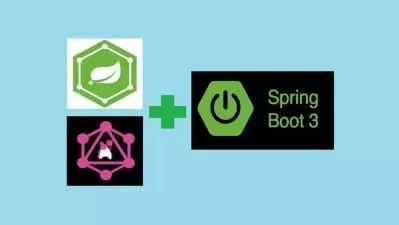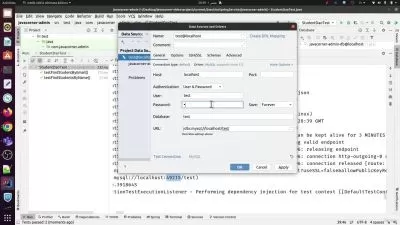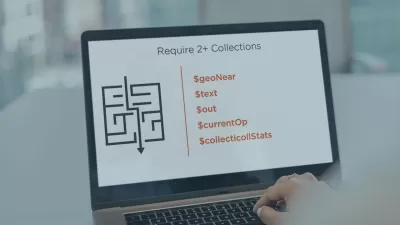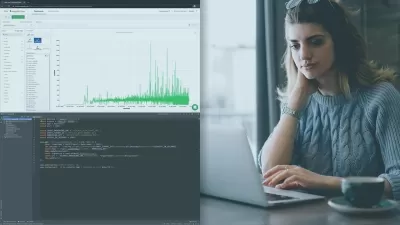Starting with Apache Wicket (version 9.x+)
David Marko
4:57:23
Description
Get started with Apache Wicket in 2022 with forms, components, MongoDB, GridFS and backed by SpringBoot
What You'll Learn?
- How to make a basic Apache Wicket project setup
- Manage Apache Wicket + Spring Boot integration
- Explore Apache Wicket basic concepts
- Develop basic Todo App using Wicket
- Connecting to database using Spring Data integration (MongoDB)
- Using Apache Wicket components
- Use HTML/CSS templates together with Apache Wicket related tag attributes
- Understand how to design application with Apache Wicket in background
Who is this for?
More details
DescriptionHello,
welcome to the ‘Starting with Apache Wicket’ course. With this course you are going to add a value to your existing JAVA and Apache Wicket 9+ (with SpringBoot) knowledge by getting familiar with several techniques for solving specifically selected areas of JAVA web application development.
We will focus on several topics often useful in corporate JAVA development but not exclusively. SpringBoot is being used here as an underlying framework, but solutions presented here are not specific to this platform and can be reused e.g. with recent Quarkus support etc.
Primary idea of this course is to help a new or existing Apache Wicket developers to adopt certain knowledge in easy way. Solutions presented are being used for several years in production grade Wicket applications and libraries used are well known for stability and active development. This will protect the value invested into adopting some libraries or projects.
Topics covered by this course:
During a course we create basic Apache Wicket single page application and each lecture will add a new enhancement to it. Eventually we create single application with many different features. Main topics include:
creating a full featured single page application using Apache Wicket
export application data in MS Excel format with formatting and some other features
export application data in PDF format with formatting, embedded images or bar-codes
including MongoDB as persistent data storage
using GridFS as an attachment/file uploads data storage (PREPARING)
Important part of this course is to realize 'what we don't need to do' when using Apache Wicket. Simplification can be huge and old saying that 'the best code is the code you don't have to write' proves here.
Important:
The source code is available through the link attached to the last lesson in this course. You can clone the repo and use the code snippets we are building in this course.
Summary:
‘Starting with Apache Wicket’ course is targeted for individuals or small/medium teams of professional Java developers that want to be productive and competitive in this large market. Techniques presented here can be reused easily in application development of many kinds.
Who this course is for:
- 'Starting with Apache Wicket' is targeted for individuals or small/medium teams of professional Java developers that want to be productive and competitive in this large market area. You will see that Apache Wicket can help you to quickly create an applications, that you can maintain easily for decades.
Hello,
welcome to the ‘Starting with Apache Wicket’ course. With this course you are going to add a value to your existing JAVA and Apache Wicket 9+ (with SpringBoot) knowledge by getting familiar with several techniques for solving specifically selected areas of JAVA web application development.
We will focus on several topics often useful in corporate JAVA development but not exclusively. SpringBoot is being used here as an underlying framework, but solutions presented here are not specific to this platform and can be reused e.g. with recent Quarkus support etc.
Primary idea of this course is to help a new or existing Apache Wicket developers to adopt certain knowledge in easy way. Solutions presented are being used for several years in production grade Wicket applications and libraries used are well known for stability and active development. This will protect the value invested into adopting some libraries or projects.
Topics covered by this course:
During a course we create basic Apache Wicket single page application and each lecture will add a new enhancement to it. Eventually we create single application with many different features. Main topics include:
creating a full featured single page application using Apache Wicket
export application data in MS Excel format with formatting and some other features
export application data in PDF format with formatting, embedded images or bar-codes
including MongoDB as persistent data storage
using GridFS as an attachment/file uploads data storage (PREPARING)
Important part of this course is to realize 'what we don't need to do' when using Apache Wicket. Simplification can be huge and old saying that 'the best code is the code you don't have to write' proves here.
Important:
The source code is available through the link attached to the last lesson in this course. You can clone the repo and use the code snippets we are building in this course.
Summary:
‘Starting with Apache Wicket’ course is targeted for individuals or small/medium teams of professional Java developers that want to be productive and competitive in this large market. Techniques presented here can be reused easily in application development of many kinds.
Who this course is for:
- 'Starting with Apache Wicket' is targeted for individuals or small/medium teams of professional Java developers that want to be productive and competitive in this large market area. You will see that Apache Wicket can help you to quickly create an applications, that you can maintain easily for decades.
User Reviews
Rating
David Marko
Instructor's Courses
Udemy
View courses Udemy- language english
- Training sessions 36
- duration 4:57:23
- Release Date 2022/12/18














